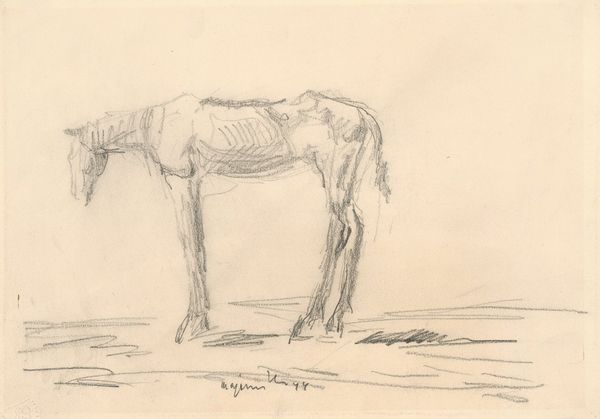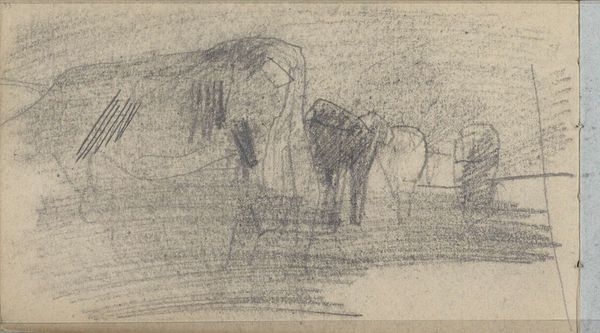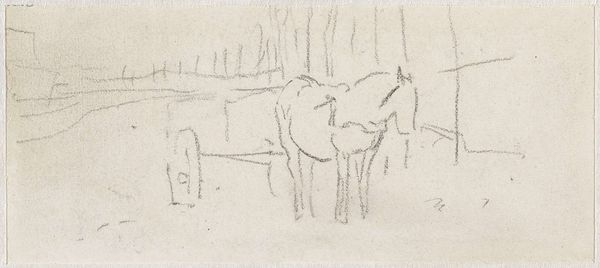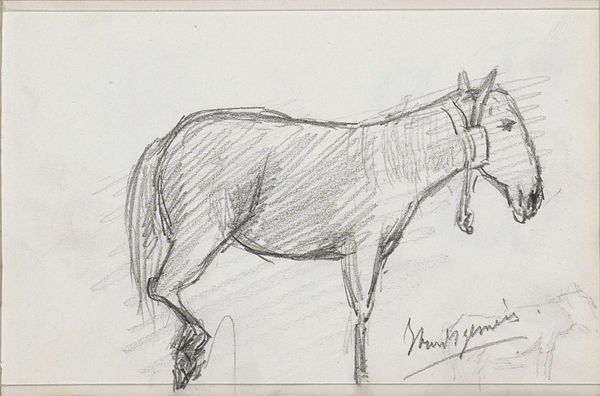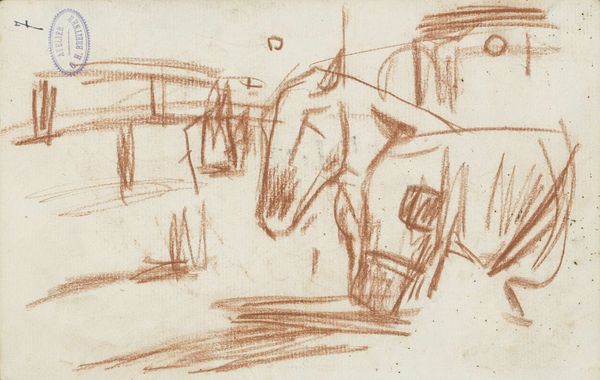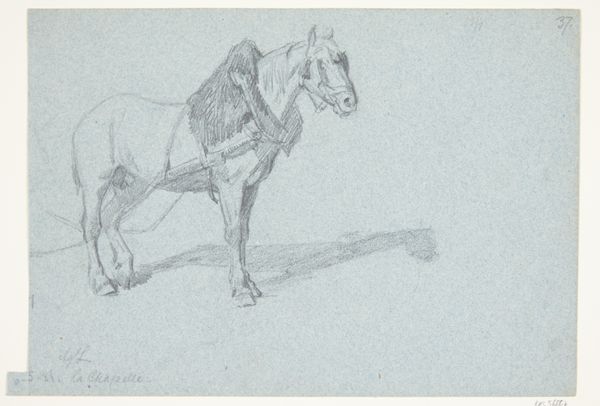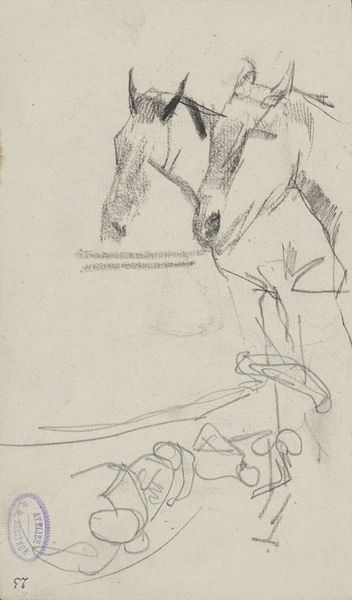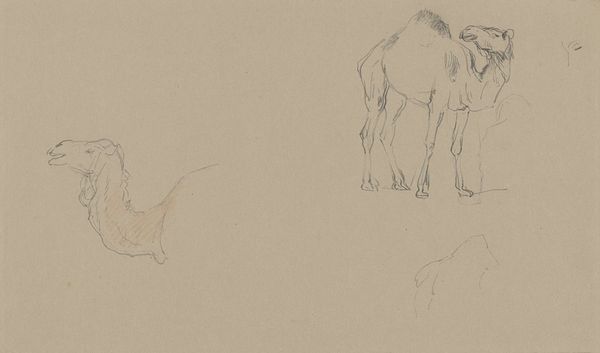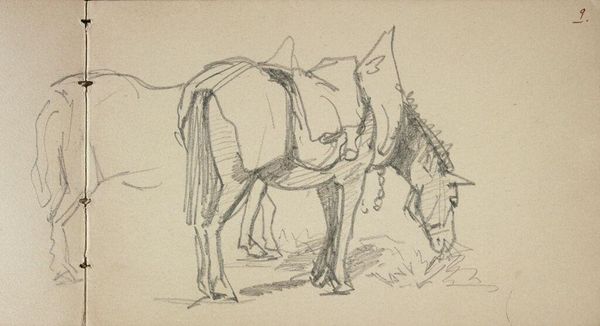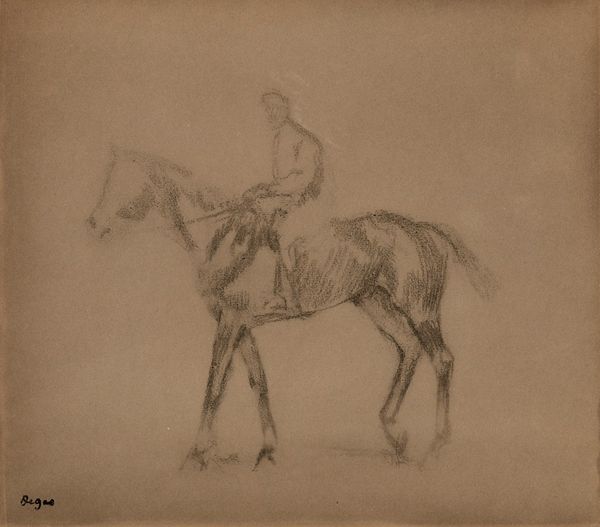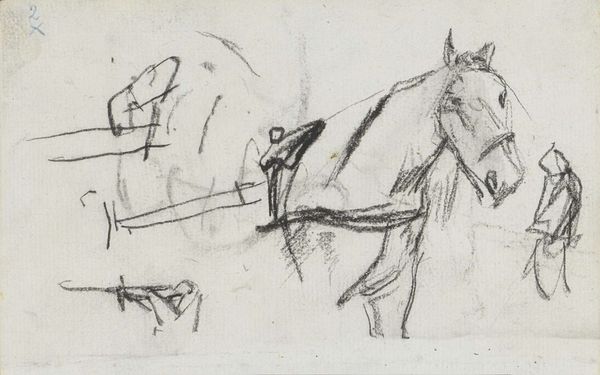
drawing, pencil
#
portrait
#
drawing
#
landscape
#
figuration
#
pencil
Copyright: Public Domain: Artvee
Editor: This is Cyprián Majerník's "Lonely Horse," a pencil drawing from 1944. The sketchiness and muted tones create such a feeling of melancholy. What stands out to you when you look at this piece? Curator: Immediately, the symbolism of the horse itself captures my attention. Throughout history, the horse has represented freedom, power, even nobility. But here, the title suggests a solitary existence, a poignant detachment. Does the surrounding landscape reinforce that sense of isolation for you? Editor: Absolutely, it’s quite stark and barren. The distant sailboat almost mocks the horse's immobility. Curator: Precisely! And look closer at how Majerník renders the horse. The thin lines, the almost skeletal form—do you see hints of vulnerability, perhaps even suffering, symbolized here? Consider the cultural context of 1944. Editor: It does make you think about hardship and wartime. Maybe the horse represents something beyond just a literal animal – a stand-in for people? Curator: Indeed. Artists often imbue animals with anthropomorphic qualities, especially during times of upheaval. The “lonely horse” becomes a symbol for displaced populations, a visual lament for lost freedoms, its head hung low with an implied defeat. The artist’s cultural memory made visible. Do you see it as more universal in that way? Editor: Yes, seeing it that way gives the piece so much more resonance. Curator: It's remarkable how Majerník uses such simple lines to evoke complex emotions. We started seeing it as a landscape with a horse, now it reads as an evocative metaphor for loss and resilience, still echoing today. Editor: This has really changed how I see this seemingly simple drawing. It’s amazing what symbols can reveal about both the artist and the world around them.
Comments
No comments
Be the first to comment and join the conversation on the ultimate creative platform.
